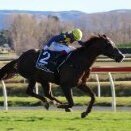-
Available Subscriptions
BOAY Racing News
39,312 topics in this forum
-
- Journalists
Thrilling finish to Waikato Steeplechase
-
- Journalists
- 0 replies
- 194 views
-
- Journalists
Tommyra pulls off long range target
-
- Journalists
- 0 replies
- 233 views
-
- Journalists
AUDIO: Andrew Bensley
-
- Journalists
- 0 replies
- 159 views
-
- Journalists
Sharrock and Schofer dominate at Hawera
-
- Journalists
- 0 replies
- 226 views
-
- Journalists
Robertson hoping Mike is magical
-
- Journalists
- 0 replies
- 204 views
-
- Journalists
Arden Messi thriving ahead of junior assignment
-
- Journalists
- 0 replies
- 209 views
-
- Journalists
Winning double for Hopes
-
- Journalists
- 0 replies
- 179 views
-
- Journalists
No fears for Copy That
-
- Journalists
- 0 replies
- 214 views
-
- Journalists
Selections | Addington, 9 August
-
- Journalists
- 0 replies
- 200 views
-
- Journalists
Big Fish, Little Fish – Addington (9 August)
-
- Journalists
- 0 replies
- 169 views
-
- Journalists
AUDIO: Breakfast with the Kiwis
-
- Journalists
- 0 replies
- 186 views
-
- Journalists
Spinoff from Ablaze’s amazing run of success
-
- Journalists
- 0 replies
- 213 views
-
- Journalists
Wilson targets Te Rapa jumps features
-
- Journalists
- 0 replies
- 233 views
-
- Journalists
Ladd was such a driving force for breeders
-
- Journalists
- 0 replies
- 249 views
-
- Journalists
VRC Oaks winner put on notice to perform
-
- Journalists
- 0 replies
- 236 views
-
- Journalists
Melody Belle forward for Missile return
-
- Journalists
- 0 replies
- 285 views
-
- Journalists
Big Mike a nice distraction for Phelan
-
- Journalists
- 0 replies
- 202 views
-
- Journalists
Veteran galloper to resume at Hawera
-
- Journalists
- 0 replies
- 223 views
-
- Journalists
AUDIO: Pam Gerard
-
- Journalists
- 0 replies
- 251 views
-
- Journalists
Ballymore surpasses $6m season mark
-
- Journalists
- 0 replies
- 2.7k views
-
- Journalists
Deal reached for talented filly Matchmaker
-
- Journalists
- 0 replies
- 219 views
-
-
- Journalists
- 0 replies
- 252 views
-
-
- Journalists
Darnum’s dash for President’s cash
-
- Journalists
- 0 replies
- 292 views
-
- Journalists
Cranbourne Classic brought forward
-
- Journalists
- 0 replies
- 263 views
-
- Journalists
Funding Model changes for 2020/21 season
-
- Journalists
- 0 replies
- 213 views



